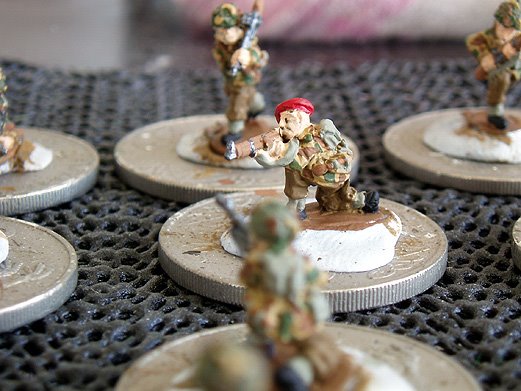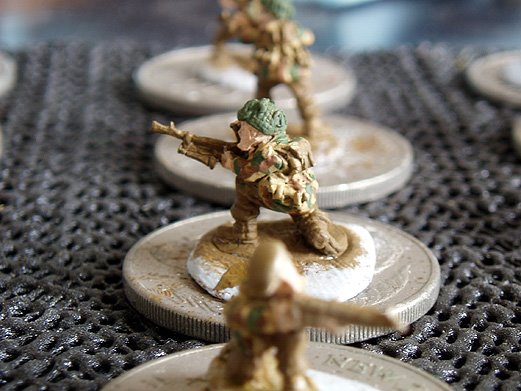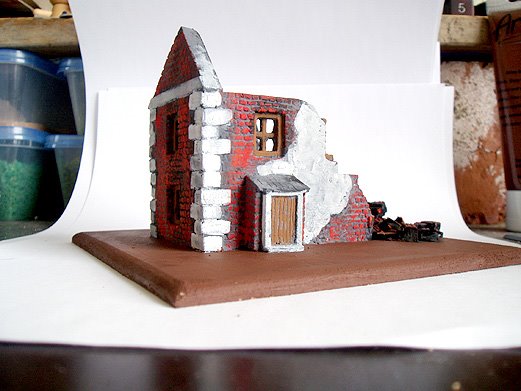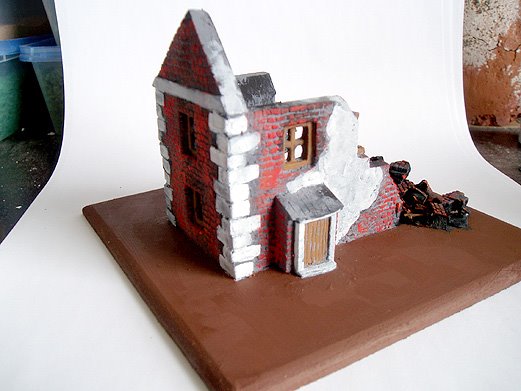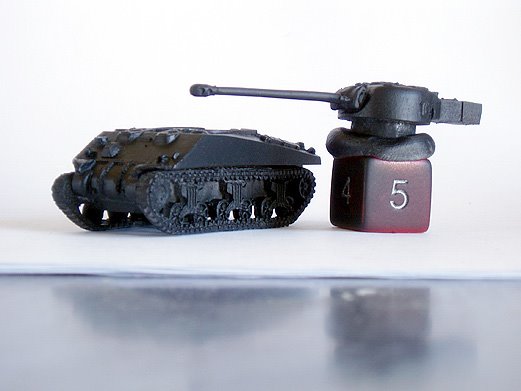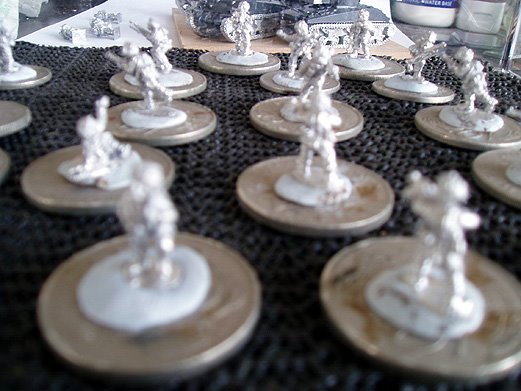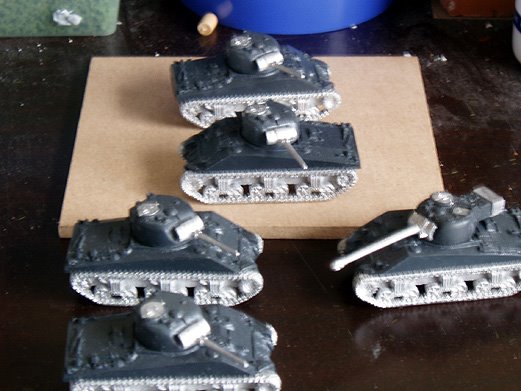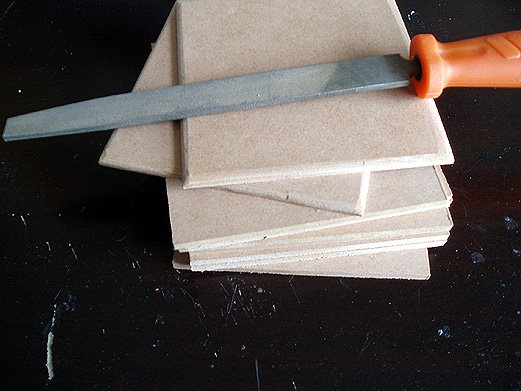
Saturday, March 29, 2008
Friday, March 28, 2008
FOW Figure Conversions
But just because I don’t have the skills (or may be the patience) to do it myself it doesn’t mean I don’t admire those that do do it.
The first time I came across large scale (at least in my mind it’s large scale) Flames of War conversions, was an article on the Flames of War website looking at the process John Boultwood used to create his Dad’s Army, FOW Army.
It’s well worth a look.
Closer to my heart, but sadly as yet unfinished (or at least unpublished in it’s finished form) is Utini’s Band of Brother’s themed FOW Army.
I have to admire the amount of work, research and patience these crazy fanboys do to recreate fictional TV characters as the basis for their Flame of War armies.
Maybe one day I’ll have to invest in some Green Stuff. But for now I’ll concentrate on trying to improve my painting skills.
Thursday, March 27, 2008
Painting Challenge Update!
Monday, March 24, 2008
World War Manurewa
Not sure how interesting this will actually be, but probably worth checking out if you live in South Auckland:
An exhibition that focuses on what happens in a small town when the population is affected by war. To accompany the exhibition, historical photographs and artifacts will be on display in the downstairs foyer.
Venue: Nathan Homestead, 70 Hill Road, Manurewa.
Duration: 4th April - 4th May
Times: Mon-Fri 9am - 5pm, Weekends 1-4pm
An exhibition that focuses on what happens in a small town when the population is affected by war. To accompany the exhibition, historical photographs and artifacts will be on display in the downstairs foyer.
Venue: Nathan Homestead, 70 Hill Road, Manurewa.
Duration: 4th April - 4th May
Times: Mon-Fri 9am - 5pm, Weekends 1-4pm
Road Making Trials #2
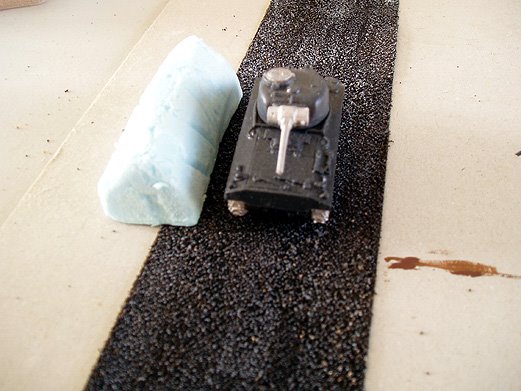 After sprypainting the road black, I dedided to try some grey dry brushing. This caused some of the grit to come off, but otherwise ok. I'm not sure that the road requires dry brushing and that just leaving it black might do the job ok. I might do another strip without the dry brushing and take them both along to my next gaming night.
After sprypainting the road black, I dedided to try some grey dry brushing. This caused some of the grit to come off, but otherwise ok. I'm not sure that the road requires dry brushing and that just leaving it black might do the job ok. I might do another strip without the dry brushing and take them both along to my next gaming night.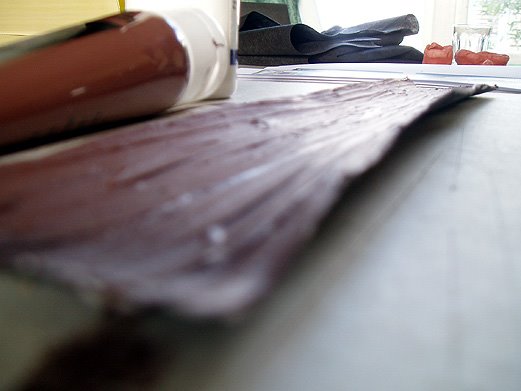 The mud road was looking ok, but it has a habit of warping overnight.... I might try ironing it and then dry brushing it if it dosen't warp again.
The mud road was looking ok, but it has a habit of warping overnight.... I might try ironing it and then dry brushing it if it dosen't warp again.
Saturday, March 22, 2008
Road Making Trials
I read recently on the Flames of War forums that somebody had made roads out of weed mat and sand. Interesting I thought, though I wasn't convinced. The only weed mat I had seen was a bit to coarse to glue sand onto. However, on an Easter Egg buying trip to the Warehouse today I made a beeline for the gardening section and discovered that they do an almost cloth like wee mat. At $2.49 a square meter I just had to buy some to experiment with.
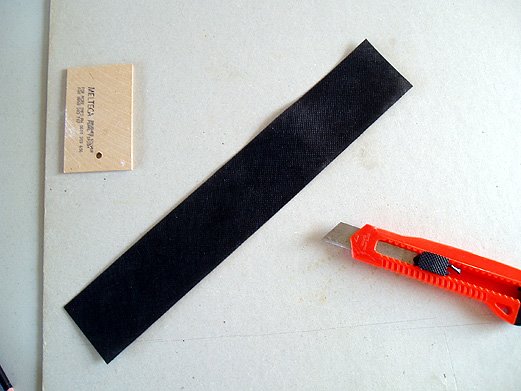 Once I got home I proceeded in cutting a short strip to test the idea.
Once I got home I proceeded in cutting a short strip to test the idea.
 Then I grabbed a Sherman to make sure the scale was right. Looks good to me, I bit wide for Bocage country, but should be good for my Normandy Table.
Then I grabbed a Sherman to make sure the scale was right. Looks good to me, I bit wide for Bocage country, but should be good for my Normandy Table.
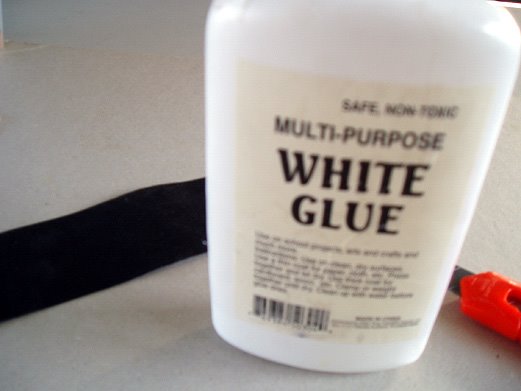 Then I had to quickly cover it with PVA glue.
Then I had to quickly cover it with PVA glue.
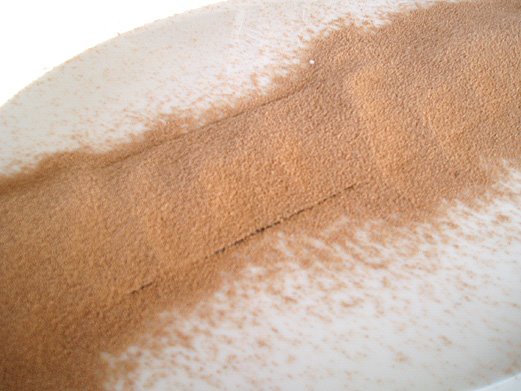 Throw some fine sand on.
Throw some fine sand on.
 And here it is drying off waiting to be undercoated.
And here it is drying off waiting to be undercoated.
 The material like nature of the weed mat got me thinking about another roading tutorial on the Flames of War forums. One that use silocon sealer.
The material like nature of the weed mat got me thinking about another roading tutorial on the Flames of War forums. One that use silocon sealer.
 First you squirt it on.
First you squirt it on.
 Then your spread it out, leaving it all rutted like its been driven over by numerous army trucks! Once it's dry, I'll (hopefully) be able to paint it. I say hopefully as I'm hoping that the acrylic sealer will be paintable....
Then your spread it out, leaving it all rutted like its been driven over by numerous army trucks! Once it's dry, I'll (hopefully) be able to paint it. I say hopefully as I'm hoping that the acrylic sealer will be paintable....
More pictures once they've both be painted!
 Once I got home I proceeded in cutting a short strip to test the idea.
Once I got home I proceeded in cutting a short strip to test the idea. Then I grabbed a Sherman to make sure the scale was right. Looks good to me, I bit wide for Bocage country, but should be good for my Normandy Table.
Then I grabbed a Sherman to make sure the scale was right. Looks good to me, I bit wide for Bocage country, but should be good for my Normandy Table. Then I had to quickly cover it with PVA glue.
Then I had to quickly cover it with PVA glue. Throw some fine sand on.
Throw some fine sand on. And here it is drying off waiting to be undercoated.
And here it is drying off waiting to be undercoated. The material like nature of the weed mat got me thinking about another roading tutorial on the Flames of War forums. One that use silocon sealer.
The material like nature of the weed mat got me thinking about another roading tutorial on the Flames of War forums. One that use silocon sealer. First you squirt it on.
First you squirt it on. Then your spread it out, leaving it all rutted like its been driven over by numerous army trucks! Once it's dry, I'll (hopefully) be able to paint it. I say hopefully as I'm hoping that the acrylic sealer will be paintable....
Then your spread it out, leaving it all rutted like its been driven over by numerous army trucks! Once it's dry, I'll (hopefully) be able to paint it. I say hopefully as I'm hoping that the acrylic sealer will be paintable....More pictures once they've both be painted!
Thursday, March 20, 2008
The 6th Airborne Division in Normandy
At dawn on the 6th June 1944, two Allied armies, one British and one American, landed on the beaches of Normandy in France. It was the largest invasion ever attempted, and its ultimate goal was to secure a foothold in Europe, to defeat Germany and liberate the Continent from Nazi rule. Leading the invasion, landing by parachute and glider, several hours before the first troops assaulted the beaches, were three Airborne Divisions; two were American and landed in the west, the other, the 6th British Airborne Division, landed in the extreme east.
The main tasks of the 6th Airborne Division were as follows:
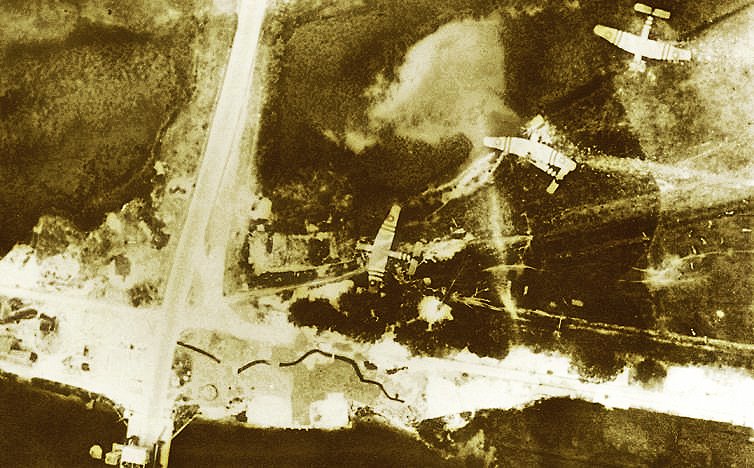 1. To capture the Bénouville and Ranville Bridges. These strategically vital bridges, if held against counterattack, would not only prevent the Germans from moving decisively against the flank of the British and Canadian seaborne troops as they advanced inland, but they would also enable the Allies to advance eastwards.
1. To capture the Bénouville and Ranville Bridges. These strategically vital bridges, if held against counterattack, would not only prevent the Germans from moving decisively against the flank of the British and Canadian seaborne troops as they advanced inland, but they would also enable the Allies to advance eastwards.
2. The destruction of the Merville Battery. Several miles to the north-east of these bridges was an imposing fortification that contained four large calibre guns, which could do terrific damage to the invasion fleet. The 6th Airborne Division had to attack and destroy these guns in the hours before the landings took place.
The first British troops that arrived in France were the one hundred and eighty men of Major John Howard's "coup de main" force, consisting of two platoons of "B" and all of "D" Company of the 2nd Oxford & Bucks Light Infantry. Travelling in six gliders, they landed within yards of both the Bénouville and Ranville Bridges, and within ten minutes they had brilliantly captured both of them intact. Bénouville Bridge would later become more famously known as Pegasus Bridge.
Several miles to the east, the four thousand paratroopers of the 3rd and 5th Parachute Brigades were not so lucky. Poor weather conditions and high winds obscured the drop zone and scattered the parachutists as they jumped. Many men dropped miles from where they should have been, others drowned in ground that had been flooded by the Germans. Gradually the six battalions of these two brigades formed up at their rendezvous points, however they could only muster between 25 and 60% of their full strength. Despite this, they went about their tasks. The 7th Parachute Battalion relieved Howard's men at the Bridges, the 12th and 13th Parachute Battalions secured several villages to the south-east to shield the Bridges against attack from the east of the River Orne, whilst the engineers of the 3rd Parachute Squadron, supported by the 8th and 1st Canadian Parachute Battalions destroyed five bridges across the River Dives, eight miles to the east, thus greatly impeding subsequent German counterattacks.
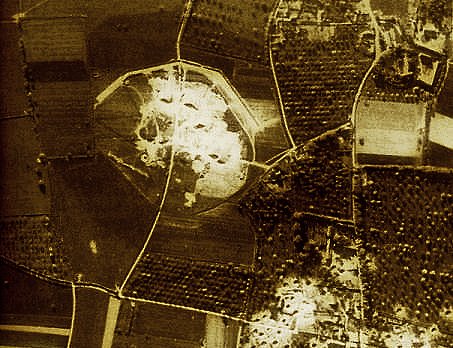 Of all of these units, the 9th Parachute Battalion suffered worst from its drop. Their task was to destroy the Merville Battery, but after hours of waiting at the rendezvous no more than one hundred and fifty of their men had arrived, and very little of their specialist assault equipment had been found. Their commander, Lt-Colonel Terence Otway, was left with no choice but to attack with what he had.
Of all of these units, the 9th Parachute Battalion suffered worst from its drop. Their task was to destroy the Merville Battery, but after hours of waiting at the rendezvous no more than one hundred and fifty of their men had arrived, and very little of their specialist assault equipment had been found. Their commander, Lt-Colonel Terence Otway, was left with no choice but to attack with what he had.
The Battery was a formidable position. It was defended by one hundred and thirty Germans, supported by numerous machine-gun positions, all sitting inside two huge belts of barbed wire, in between which was a minefield. Silently, the paratroopers cut their way through the wire and cleared paths of mines. As they were forming up for the attack, they were spotted and fired on by no fewer than six machine-guns. As these were being dealt with, Otway gave the order to attack, whereupon the assault party charged across the minefield, lobbing grenades and firing from the hip at any sign of enemy resistance. The Germans fought back hard and cost the assault party dear, however they could not be prevented from reaching the casemates, and once inside they engaged their defenders hand to hand. At a heavy cost, the guns were destroyed and in so doing the lives of hundreds, possibly thousands of men in the invasion fleet had been saved. Of the one hundred and fifty paratroopers who had attacked the Merville Battery, sixty-five were either killed or wounded, whilst of the one hundred and thirty strong German garrison, only six escaped injury.
By dawn, the 6th Airborne Division was holding a firm defensive position as the Allies began to land on the beaches. The assault began with a terrific bombardment of the beach defences by bombers and warships, after several hours of which the assault infantry pressed forward in their landing craft. By the end of the day, all of the beaches had been captured and the Allies were edging ashore in spite of heavy casualties, the worst of which had been suffered by the Americans on Omaha Beach.
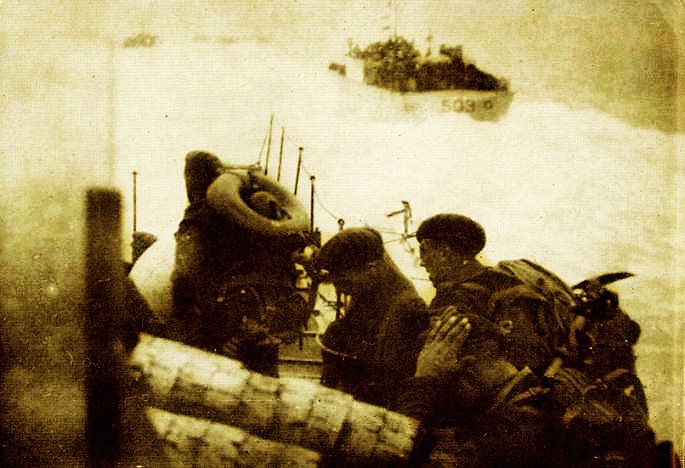 On Sword Beach, nearest to the 6th Airborne Division, the Commandos of the 1st Special Service Brigade arrived, and with great speed they cut their way through German resistance to link up with the Airborne troops. The Commandos, having crossed the bridges, pushed on northwards to the aid of the desperately weak 9th Parachute Battalion. Elsewhere, the fiercest fighting was experienced by the 12th Parachute Battalion, who fought off two heavy attacks on their positions, and in particular by the 7th Parachute Battalion, who had only a third of their strength and were struggling to hold the western end of Pegasus Bridge from determined German attacks. Despite heavy casualties, they yielded no ground and by midnight they were relieved by the main force of infantry arriving from Sword Beach.
On Sword Beach, nearest to the 6th Airborne Division, the Commandos of the 1st Special Service Brigade arrived, and with great speed they cut their way through German resistance to link up with the Airborne troops. The Commandos, having crossed the bridges, pushed on northwards to the aid of the desperately weak 9th Parachute Battalion. Elsewhere, the fiercest fighting was experienced by the 12th Parachute Battalion, who fought off two heavy attacks on their positions, and in particular by the 7th Parachute Battalion, who had only a third of their strength and were struggling to hold the western end of Pegasus Bridge from determined German attacks. Despite heavy casualties, they yielded no ground and by midnight they were relieved by the main force of infantry arriving from Sword Beach.
Throughout the next week the 6th Airborne Division held its bridgehead across the River Orne against increasingly vicious attacks. Time after time they threw these back with severe casualties, however a steady toll was being taken on their own numbers and as such it was proving difficult for them to hold such a wide expanse of territory. Gradually the attacks became focused upon a crucial wide ridge, which overlooked the British invasion area and therefore it was vital that this ground be held. Here, the well-equipped German 346th Division made numerous attempts to gain a foothold by constantly attacking the 1st Canadian and 9th Parachute Battalions as well as the 1st Special Service Brigade. On the 12th June, a particularly heavy attack was successfully beaten off, however the position of the two parachute battalions was precarious and it was doubtful whether they could withstand another attack of such magnitude.
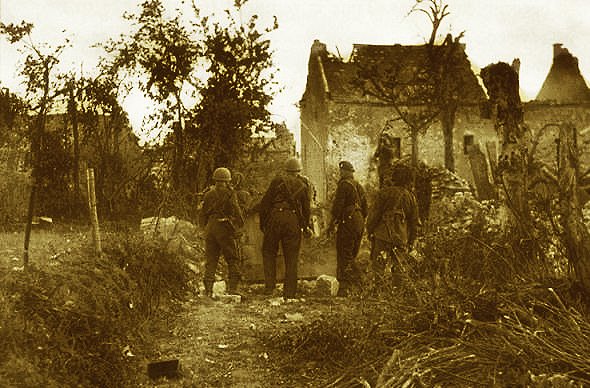 The main position from which the 346th Division was fighting was the village of Bréville, which was sited upon the ridge and also served as a potentially destabilising wedge between the positions of the Paratroopers and the Commandos. The commander of the 6th Airborne Division, Major-General Richard Gale, decided that Bréville had to be captured immediately or else his defence might fold. During the night of the 12th June, the 12th Parachute Battalion attacked and successfully captured the village, though at a very high cost. The British lost one hundred and sixty two killed to the Germans seventy seven. Despite this, The Battle of Bréville was a crucial victory because it truly secured the 6th Airborne Division's position, and with it the entire Allied left flank. Furthermore, the offensive spin of the 346th Division had been shattered, and from the 12th June onwards, no further serious attacks were mounted against the 6th Airborne Division.
The main position from which the 346th Division was fighting was the village of Bréville, which was sited upon the ridge and also served as a potentially destabilising wedge between the positions of the Paratroopers and the Commandos. The commander of the 6th Airborne Division, Major-General Richard Gale, decided that Bréville had to be captured immediately or else his defence might fold. During the night of the 12th June, the 12th Parachute Battalion attacked and successfully captured the village, though at a very high cost. The British lost one hundred and sixty two killed to the Germans seventy seven. Despite this, The Battle of Bréville was a crucial victory because it truly secured the 6th Airborne Division's position, and with it the entire Allied left flank. Furthermore, the offensive spin of the 346th Division had been shattered, and from the 12th June onwards, no further serious attacks were mounted against the 6th Airborne Division.
For the following two months, the Division fought a static defence. That is to say they remained firmly in their positions and made no attempts to advance, but at the same time they sent out numerous heavy patrols, by day and night, to seek out and raid any enemy in their area. The purpose of this strategy was to destabilise the Germans and so prevent them from becoming comfortable enough to contemplate another offensive against the Division. The Airborne troops, and in particular the Commandos, were ideally suited to this task they did an excellent job of unsettling and frustrating their opponents.
Elsewhere, the Allied armies were advancing slowly in the face of stiff opposition. However the Germans were gradually worn down and, in late July, the Americans succeeded in breaking through the lines of the German Seventh Army and began to encircle them in what was to become known as the Falaise Pocket. Inevitably, the Germans were heavily defeated in Falaise, and with their front line in disarray they fell back, rapidly pursued by the Allies. Within weeks, most of France and Belgium had been liberated.
The 6th Airborne Division took part in this advance despite the fact that many doubted that they would be able to maintain the pace, because they had far fewer vehicles and support equipment than a standard British infantry formation had available to it. Confounding the skeptics, the Division, through quick marches and intelligent use of what resources they had, were not in the slightest hindered in this regard and in just ten days they waged a fighting advance over a distance of some thirty miles. Throughout this time, the Germans fought a stubborn rearguard action, particularly across the three rivers that the Division had to ford, but nevertheless they overcame all that was before them, and on the 27th August the Division was ordered to halt at the mouth of the River Seine. Their role in the Normandy campaign was at an end and in early September they returned to England.
Throughout the three months of fighting in Normandy, the 6th Airborne Division had made a crucial contribution to the success of the invasion. All of their objectives had been achieved during the first few hours of the landing, and over the coming days they gave no ground whatsoever in the face of determined German counterattacks. Their casualties, however, had been considerable. Of the approximate ten thousand men of the Division, one thousand one hundred and forty-seven had been killed, two thousand seven hundred and five were wounded, and nine hundred and twenty-seven were missing. The fact that, in spite of this loss, mostly as a consequence of the scattered drop on the first night of the landings, the Division still manage to accomplish its tasks and hold such a wide expanse of territory, can only be attributed to the high calibre of its soldiers.
The main tasks of the 6th Airborne Division were as follows:
 1. To capture the Bénouville and Ranville Bridges. These strategically vital bridges, if held against counterattack, would not only prevent the Germans from moving decisively against the flank of the British and Canadian seaborne troops as they advanced inland, but they would also enable the Allies to advance eastwards.
1. To capture the Bénouville and Ranville Bridges. These strategically vital bridges, if held against counterattack, would not only prevent the Germans from moving decisively against the flank of the British and Canadian seaborne troops as they advanced inland, but they would also enable the Allies to advance eastwards.2. The destruction of the Merville Battery. Several miles to the north-east of these bridges was an imposing fortification that contained four large calibre guns, which could do terrific damage to the invasion fleet. The 6th Airborne Division had to attack and destroy these guns in the hours before the landings took place.
The first British troops that arrived in France were the one hundred and eighty men of Major John Howard's "coup de main" force, consisting of two platoons of "B" and all of "D" Company of the 2nd Oxford & Bucks Light Infantry. Travelling in six gliders, they landed within yards of both the Bénouville and Ranville Bridges, and within ten minutes they had brilliantly captured both of them intact. Bénouville Bridge would later become more famously known as Pegasus Bridge.
Several miles to the east, the four thousand paratroopers of the 3rd and 5th Parachute Brigades were not so lucky. Poor weather conditions and high winds obscured the drop zone and scattered the parachutists as they jumped. Many men dropped miles from where they should have been, others drowned in ground that had been flooded by the Germans. Gradually the six battalions of these two brigades formed up at their rendezvous points, however they could only muster between 25 and 60% of their full strength. Despite this, they went about their tasks. The 7th Parachute Battalion relieved Howard's men at the Bridges, the 12th and 13th Parachute Battalions secured several villages to the south-east to shield the Bridges against attack from the east of the River Orne, whilst the engineers of the 3rd Parachute Squadron, supported by the 8th and 1st Canadian Parachute Battalions destroyed five bridges across the River Dives, eight miles to the east, thus greatly impeding subsequent German counterattacks.
 Of all of these units, the 9th Parachute Battalion suffered worst from its drop. Their task was to destroy the Merville Battery, but after hours of waiting at the rendezvous no more than one hundred and fifty of their men had arrived, and very little of their specialist assault equipment had been found. Their commander, Lt-Colonel Terence Otway, was left with no choice but to attack with what he had.
Of all of these units, the 9th Parachute Battalion suffered worst from its drop. Their task was to destroy the Merville Battery, but after hours of waiting at the rendezvous no more than one hundred and fifty of their men had arrived, and very little of their specialist assault equipment had been found. Their commander, Lt-Colonel Terence Otway, was left with no choice but to attack with what he had.The Battery was a formidable position. It was defended by one hundred and thirty Germans, supported by numerous machine-gun positions, all sitting inside two huge belts of barbed wire, in between which was a minefield. Silently, the paratroopers cut their way through the wire and cleared paths of mines. As they were forming up for the attack, they were spotted and fired on by no fewer than six machine-guns. As these were being dealt with, Otway gave the order to attack, whereupon the assault party charged across the minefield, lobbing grenades and firing from the hip at any sign of enemy resistance. The Germans fought back hard and cost the assault party dear, however they could not be prevented from reaching the casemates, and once inside they engaged their defenders hand to hand. At a heavy cost, the guns were destroyed and in so doing the lives of hundreds, possibly thousands of men in the invasion fleet had been saved. Of the one hundred and fifty paratroopers who had attacked the Merville Battery, sixty-five were either killed or wounded, whilst of the one hundred and thirty strong German garrison, only six escaped injury.
By dawn, the 6th Airborne Division was holding a firm defensive position as the Allies began to land on the beaches. The assault began with a terrific bombardment of the beach defences by bombers and warships, after several hours of which the assault infantry pressed forward in their landing craft. By the end of the day, all of the beaches had been captured and the Allies were edging ashore in spite of heavy casualties, the worst of which had been suffered by the Americans on Omaha Beach.
 On Sword Beach, nearest to the 6th Airborne Division, the Commandos of the 1st Special Service Brigade arrived, and with great speed they cut their way through German resistance to link up with the Airborne troops. The Commandos, having crossed the bridges, pushed on northwards to the aid of the desperately weak 9th Parachute Battalion. Elsewhere, the fiercest fighting was experienced by the 12th Parachute Battalion, who fought off two heavy attacks on their positions, and in particular by the 7th Parachute Battalion, who had only a third of their strength and were struggling to hold the western end of Pegasus Bridge from determined German attacks. Despite heavy casualties, they yielded no ground and by midnight they were relieved by the main force of infantry arriving from Sword Beach.
On Sword Beach, nearest to the 6th Airborne Division, the Commandos of the 1st Special Service Brigade arrived, and with great speed they cut their way through German resistance to link up with the Airborne troops. The Commandos, having crossed the bridges, pushed on northwards to the aid of the desperately weak 9th Parachute Battalion. Elsewhere, the fiercest fighting was experienced by the 12th Parachute Battalion, who fought off two heavy attacks on their positions, and in particular by the 7th Parachute Battalion, who had only a third of their strength and were struggling to hold the western end of Pegasus Bridge from determined German attacks. Despite heavy casualties, they yielded no ground and by midnight they were relieved by the main force of infantry arriving from Sword Beach.Throughout the next week the 6th Airborne Division held its bridgehead across the River Orne against increasingly vicious attacks. Time after time they threw these back with severe casualties, however a steady toll was being taken on their own numbers and as such it was proving difficult for them to hold such a wide expanse of territory. Gradually the attacks became focused upon a crucial wide ridge, which overlooked the British invasion area and therefore it was vital that this ground be held. Here, the well-equipped German 346th Division made numerous attempts to gain a foothold by constantly attacking the 1st Canadian and 9th Parachute Battalions as well as the 1st Special Service Brigade. On the 12th June, a particularly heavy attack was successfully beaten off, however the position of the two parachute battalions was precarious and it was doubtful whether they could withstand another attack of such magnitude.
 The main position from which the 346th Division was fighting was the village of Bréville, which was sited upon the ridge and also served as a potentially destabilising wedge between the positions of the Paratroopers and the Commandos. The commander of the 6th Airborne Division, Major-General Richard Gale, decided that Bréville had to be captured immediately or else his defence might fold. During the night of the 12th June, the 12th Parachute Battalion attacked and successfully captured the village, though at a very high cost. The British lost one hundred and sixty two killed to the Germans seventy seven. Despite this, The Battle of Bréville was a crucial victory because it truly secured the 6th Airborne Division's position, and with it the entire Allied left flank. Furthermore, the offensive spin of the 346th Division had been shattered, and from the 12th June onwards, no further serious attacks were mounted against the 6th Airborne Division.
The main position from which the 346th Division was fighting was the village of Bréville, which was sited upon the ridge and also served as a potentially destabilising wedge between the positions of the Paratroopers and the Commandos. The commander of the 6th Airborne Division, Major-General Richard Gale, decided that Bréville had to be captured immediately or else his defence might fold. During the night of the 12th June, the 12th Parachute Battalion attacked and successfully captured the village, though at a very high cost. The British lost one hundred and sixty two killed to the Germans seventy seven. Despite this, The Battle of Bréville was a crucial victory because it truly secured the 6th Airborne Division's position, and with it the entire Allied left flank. Furthermore, the offensive spin of the 346th Division had been shattered, and from the 12th June onwards, no further serious attacks were mounted against the 6th Airborne Division.For the following two months, the Division fought a static defence. That is to say they remained firmly in their positions and made no attempts to advance, but at the same time they sent out numerous heavy patrols, by day and night, to seek out and raid any enemy in their area. The purpose of this strategy was to destabilise the Germans and so prevent them from becoming comfortable enough to contemplate another offensive against the Division. The Airborne troops, and in particular the Commandos, were ideally suited to this task they did an excellent job of unsettling and frustrating their opponents.
Elsewhere, the Allied armies were advancing slowly in the face of stiff opposition. However the Germans were gradually worn down and, in late July, the Americans succeeded in breaking through the lines of the German Seventh Army and began to encircle them in what was to become known as the Falaise Pocket. Inevitably, the Germans were heavily defeated in Falaise, and with their front line in disarray they fell back, rapidly pursued by the Allies. Within weeks, most of France and Belgium had been liberated.
The 6th Airborne Division took part in this advance despite the fact that many doubted that they would be able to maintain the pace, because they had far fewer vehicles and support equipment than a standard British infantry formation had available to it. Confounding the skeptics, the Division, through quick marches and intelligent use of what resources they had, were not in the slightest hindered in this regard and in just ten days they waged a fighting advance over a distance of some thirty miles. Throughout this time, the Germans fought a stubborn rearguard action, particularly across the three rivers that the Division had to ford, but nevertheless they overcame all that was before them, and on the 27th August the Division was ordered to halt at the mouth of the River Seine. Their role in the Normandy campaign was at an end and in early September they returned to England.
Throughout the three months of fighting in Normandy, the 6th Airborne Division had made a crucial contribution to the success of the invasion. All of their objectives had been achieved during the first few hours of the landing, and over the coming days they gave no ground whatsoever in the face of determined German counterattacks. Their casualties, however, had been considerable. Of the approximate ten thousand men of the Division, one thousand one hundred and forty-seven had been killed, two thousand seven hundred and five were wounded, and nine hundred and twenty-seven were missing. The fact that, in spite of this loss, mostly as a consequence of the scattered drop on the first night of the landings, the Division still manage to accomplish its tasks and hold such a wide expanse of territory, can only be attributed to the high calibre of its soldiers.
Sunday, March 16, 2008
Reviewing The Art of War (FOW)
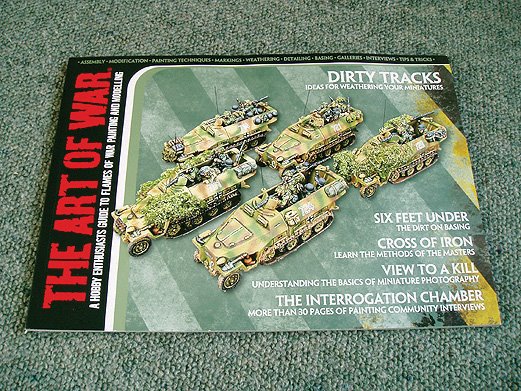 I've read about the Art of War on various blogs, and even had a quick look at Stu's copy. This and the relatively low cover price helped me make up my mind: I needed a copy. Fortunatley my Birthday was coming up so I told my wife about it and where she could pick up copy.
I've read about the Art of War on various blogs, and even had a quick look at Stu's copy. This and the relatively low cover price helped me make up my mind: I needed a copy. Fortunatley my Birthday was coming up so I told my wife about it and where she could pick up copy.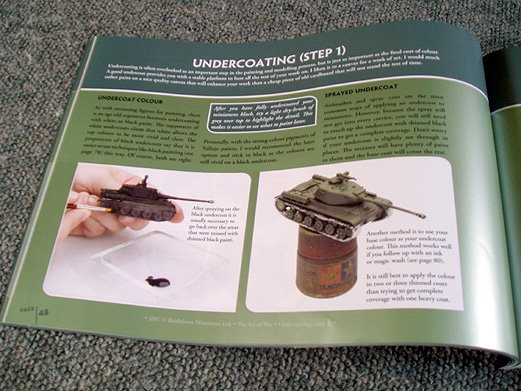 Now that I've had time to digest the contents I've come to a few conclusions. All of the reviews I've read had only good things to say about it, and whilst I agree with what they say, there are a few points worth bringing up (imho).
Now that I've had time to digest the contents I've come to a few conclusions. All of the reviews I've read had only good things to say about it, and whilst I agree with what they say, there are a few points worth bringing up (imho).Let me first say however, that it is a great piece of gamer porn, with some great tutorials that make it something that anyone new to Flames of War should own. Even myself with some painting experience under my belt found it useful. It's a testament to Battlefront's commitment to the gaming community that they would put out something of this standard at such an affordable price.
And yes, it makes me proud that Battlefront is a kiwi company.
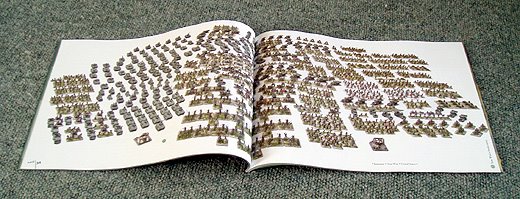 So now on to the criticisms, which could make me unpopular!
So now on to the criticisms, which could make me unpopular!The use of metallic inks might make the publication look more polished, but they don't help showcase the models being pictured. It's a distraction. I'm guessing most people want to see the models, not the shiny background colour of the page, with this in mind, all the models should be on a white, or very light coloured background.
When it comes to seeing the models, I also want to see them close up. Whilst the size of some of Tom Wise's armies are impressive, photographing whole collections doesn't allow us to see any detail. These large pictures might be fine for Tom's ego, but I'd rather see some close up pictures alongside so I can see the detail and maybe learn something from his style. I'm a visual guy. I'll see something and then wonder how the guy did it, maybe figure out a way to do it myself.
So other that those minor grumbles, I'm very happy with my copy of The Art of War.
Battlefront have announced that they are going to be doing another Art of War, this time exclusively focusing on German armies, which leads one to the assumption that they will also do American, British and Russian focussed editions in the future. Which is an interesting move. For myself, I'm never going to have an American or Russian army, so those editions would be of no interest to me. I've finished my German army and am now working on my British Airborne, so the German issue will be of little interest to me. Which got me thinking...
What would encourage me to purchase The Art of War 2: The German Army?
A painting challenge. Just a small one. A very model specific one. What would make the next Art of War a must buy is to have it come with an exclusive, Hero command team and small base. The challenge would be to see who could do the best painting and original basing for this exclusive team, with photos of the best one appearing in the next issue.
It could either be a German themed team, or a team from the same nationality to be featured in the following Art of War edition.
Of course, Battlefront wouldn't be making any money, but it would certainly cement their status as one of the best gaming companies in the world :o)
Saturday, March 15, 2008
Two Story Building Destroyed
Thursday, March 13, 2008
15mm Zombies
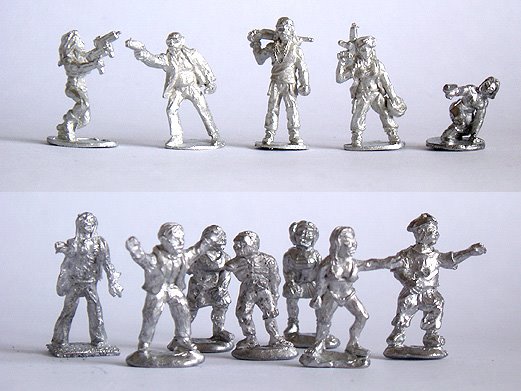 My purchase from Rebel Minis arrived today. 5 Survivors (aka Zombie Hunters) and 22 Zombies. Haven't had time to have a real close look, but as soon as I do, I'll write a little review!
My purchase from Rebel Minis arrived today. 5 Survivors (aka Zombie Hunters) and 22 Zombies. Haven't had time to have a real close look, but as soon as I do, I'll write a little review!
Tuesday, March 11, 2008
Slow Progress
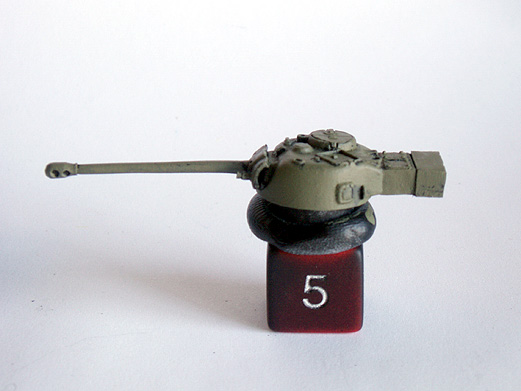 Slow progress on Stu's Painting challenge, managed to put a base coat on the turret, and touch up the base coat on my Secret Purchase. Other than that, made a bit of progress on my two story building, but discovered that the kit pieces don't fit well together, so I'm gonna have to plug some holes with DAS.
Slow progress on Stu's Painting challenge, managed to put a base coat on the turret, and touch up the base coat on my Secret Purchase. Other than that, made a bit of progress on my two story building, but discovered that the kit pieces don't fit well together, so I'm gonna have to plug some holes with DAS.
Sunday, March 09, 2008
Weekend Work Roundup
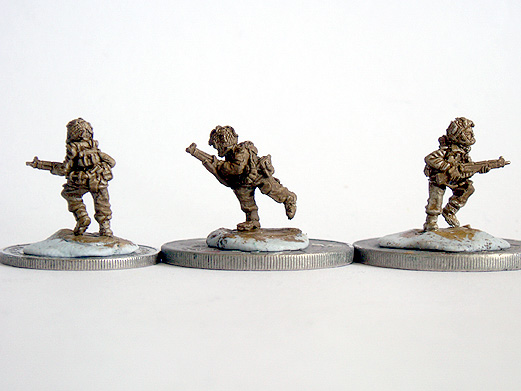 As well as undercoating one tank, I also managed to undercoat the next four bases of my Airborne Army, as well as putting the base coat down on my Secret Purchase.
As well as undercoating one tank, I also managed to undercoat the next four bases of my Airborne Army, as well as putting the base coat down on my Secret Purchase.And because I had time, I've also stared on a bombed out and burnt down two story farm house using a few spare bits that Stu gave to me.
I really should start building the actual gaming table at some point!
Saturday, March 08, 2008
English Auschwitz survivor dies
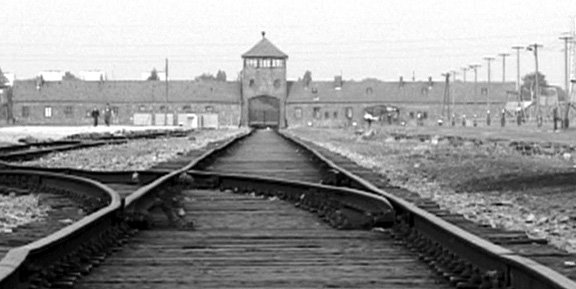 The only Englishman known to have survived the Nazi concentration camp in Auschwitz has died, aged 97.
The only Englishman known to have survived the Nazi concentration camp in Auschwitz has died, aged 97.Leon Greenman was living in Holland with his Dutch wife Esther, and their son, when they were rounded up in 1943 and sent to the death camp in Poland.
His wife and three-year-old son Barney died there but London-born Mr Greenman survived six different death camps.
After Buchenwald was liberated in 1945, he dedicated the rest of his life to telling the story of the Holocaust.
Mr Greenman later said he had promised God if he lived, he would let the world know what happened during the war.
Services against racism
His first public speech took place in 1946 and in 1995 a permanent gallery telling his story was established at the Jewish Museum in north London.
Three years later, he received an OBE for services against racism.
Mr Greenman never remarried and spent his final years in Ilford, east London.
BBC Jerusalem correspondent Tim Franks, who interviewed Mr Greenman in 1995 to mark the 50th anniversary of the liberation of Auschwitz, said he literally lived behind bars there - with bars on the windows and his letterbox sealed - as he had been targeted by neo-Nazis.
But this did not stop him from doing his work or dim his determination, our correspondent said.
Undercoating
Friday, March 07, 2008
Pathfinders, Normandy, 1944
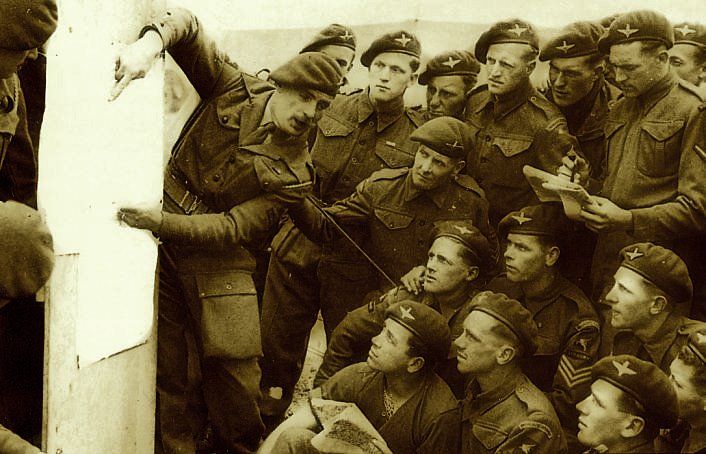 Lieutenant Bob Midwood briefs his platoon of the 22nd Independent Parachute Company on their pathfinding role in Normandy. In the top left hand corner is Lance-Corporal Edward Delaney O'Sullivan, who was killed on the 6th June 1944. His body was found by two French youths at approximately 04:00, ten yards from the body of a dead German. It is believed that the two men shot each other simultaneously with their sub-machineguns. His friend, Griff Thomas, is sitting at the front of the second row up from the bottom, with the arm of Sergeant Leverett over his right shoulder. Directly above Thomas, with his right arm hidden behind Lieutenant Midwood's back, is Sergeant Smith, and behind him, standing tall over Smith's left shoulder, is Sergeant Kidd. At the very bottom of the photograph, left to right, are R.A. Stoodley, unknown, and Ken Norton. A man by the surname of Gordon is on the back row in the centre of the photograph, wearing a medal ribbon on his chest.
Lieutenant Bob Midwood briefs his platoon of the 22nd Independent Parachute Company on their pathfinding role in Normandy. In the top left hand corner is Lance-Corporal Edward Delaney O'Sullivan, who was killed on the 6th June 1944. His body was found by two French youths at approximately 04:00, ten yards from the body of a dead German. It is believed that the two men shot each other simultaneously with their sub-machineguns. His friend, Griff Thomas, is sitting at the front of the second row up from the bottom, with the arm of Sergeant Leverett over his right shoulder. Directly above Thomas, with his right arm hidden behind Lieutenant Midwood's back, is Sergeant Smith, and behind him, standing tall over Smith's left shoulder, is Sergeant Kidd. At the very bottom of the photograph, left to right, are R.A. Stoodley, unknown, and Ken Norton. A man by the surname of Gordon is on the back row in the centre of the photograph, wearing a medal ribbon on his chest.
Wednesday, March 05, 2008
Painting Challenge Progress!
Secret Purchase
Tuesday, March 04, 2008
Tank Production: Ready for Painting!
Monday, March 03, 2008
Flat Bastard!
Sunday, March 02, 2008
FOW: Alternative History Game
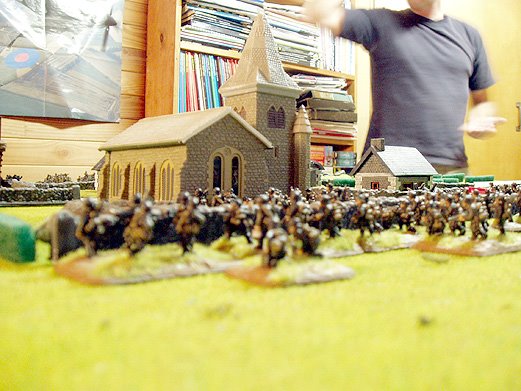 A mass of Germans wait behind the relative safety of the village church.
A mass of Germans wait behind the relative safety of the village church.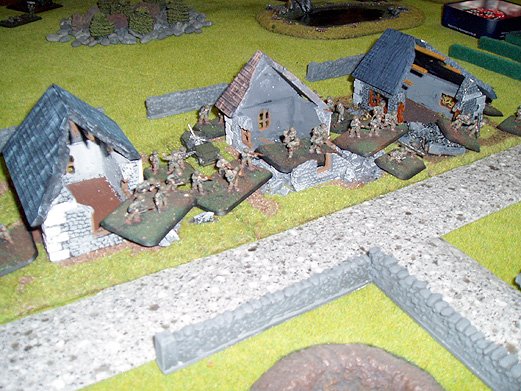 The Americans move into the quiet village.
The Americans move into the quiet village.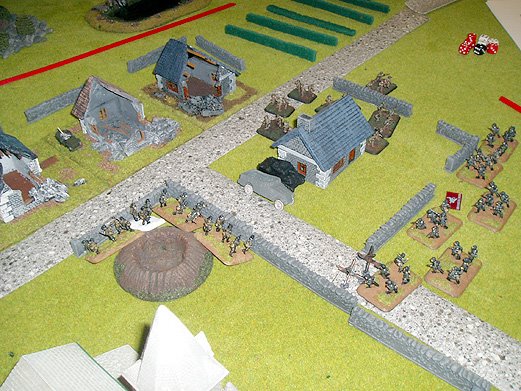 The Germans repel an American assault!
The Germans repel an American assault!With four players and only one table with any scenery last week, we decided to have a four player, four army, 1750pt game. Two American armies took on the Axis of doom, a German Army and British Army fighting together the rid the world of American Imperialism.
The Americans conceded defeat after leaving one of their objectives lightly defended, and having it over run by the two remaining British tanks. The Germans did little but slow the American advance, loosing two Marders to ricocheting machine gun bullets.
All in all, a minor victory as the Yanks should have really won, doing much more damage to the Axis of doom!
Saturday, March 01, 2008
World War II Colour Footage #2
Not a lot in this part, they totally miss out Market Garden and the Ardennes Offensive. The likelihood of uncovering some colour footage of British Airborne troops looks slim.
Subscribe to:
Posts (Atom)

